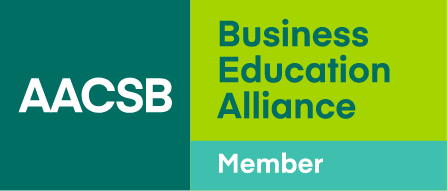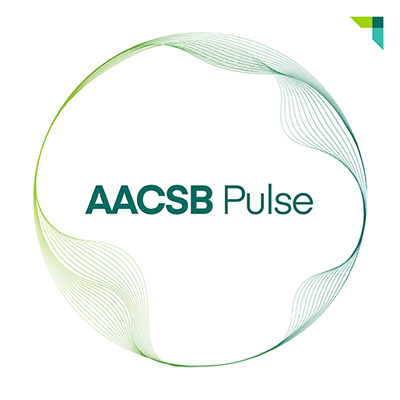Faculty and Professional Staff Resources
Standard 3: Faculty and Professional Staff Resources
3.1 The school maintains and strategically deploys sufficient participating and supporting faculty who collectively demonstrate significant academic and professional engagement that, in turn, supports high-quality outcomes consistent with the school’s mission.
3.2 Faculty are qualified through initial academic or professional preparation and sustain currency and relevancy appropriate to their classification, as follows: Scholarly Academic (SA), Practice Academic (PA), Scholarly Practitioner (SP), or Instructional Practitioner (IP). Otherwise, faculty members are classified as Additional Faculty (A).
3.3 Sufficient professional staff are available to ensure high-quality support for faculty and learners as appropriate.
3.4 The school has well-documented and well-communicated processes to manage, develop, and support faculty and professional staff over the progression of their careers that are consistent with the school’s mission, strategies, and expected outcomes.

- Use a pre-defined prompt: click on a prompt listed above the chat field for a quick way to jump in to your conversation.
- Ask your own questions: The AI Assistant can handle complex queries.
- Add detail: copy and paste your content into the chat box. Note that the AI Assistant can respond to anything that can be pasted into the chat box, but can not accept uploaded documents.
- The AI Assistant loves to learn. Use the thumbs-up and thumbs-down buttons to share feedback on responses and add comments when you’d like. All feedback is reviewed by AACSB subject matter experts and may be used to improve the accuracy, clarity, and usefulness of future answers.
- Copy the AI Assistant's answers using the copy button at the bottom of the chat box to paste them into your own document.
- Save and print your conversation using the download button to the right of the chat box near the send button.
Data Model and Use
- The AI Assistant's (Betty) underlying data model is built on a flexible architecture that leverages several advanced AI models, including, but not limited to, OpenAI, Anthropic, and Gemini.
- If you need to reference official AACSB standards or accreditation guidance, please always check the most current policies and documents on AACSB’s website.
- The AI Assistant is a generative AI tool and its responses are not created or reviewed by humans. The AI Assistant should not be relied on for official accreditation decisions or as a substitute for AACSB’s published standards, policies, or guidance. AACSB provides our AI Assistant to assist members in exploring AI use cases and accreditation-related information, but does not guarantee the accuracy or completeness of its responses. Like any generative AI tool, our AI Assistant may provide inaccurate or incomplete information. It is your responsibility to verify important details through AACSB’s official resources or by consulting directly with AACSB staff. By using the AI Assistant, you agree to these Terms of Use.
Does the AI Assistant use my data to train AI?
No. The questions you ask and any text you paste into the AI Assistant are not used to train the underlying AI model. The AI Assistant processes your input in real time to generate a response, but your data does not get fed back into the model.
AACSB may review anonymized, aggregated usage patterns (for example, the kinds of prompts members are using) to help improve the experience and make the AI Assistant more useful. However, your specific queries, conversations, and pasted content remain private and are not used for model training.
Additional Sample AI Prompts
Looking for more inspiration? Below is a list of suggested prompts for you to customize as a starting point for meeting AACSB's accreditation standards. These prompts were generated based on input from our members in 100+ countries and territories and we encourage you to edit them based on your school's unique needs. Get started by copying and pasting a prompt and supporting documentation into AACSB’s AI Assistant or another AI tool or GPT of your choice.
|
Use Case
|
Data Needed
|
Prompt
|
|---|---|---|
|
Making resource allocation decisions
|
Current data on faculty qualifications, teaching load schedules for the past two years, five years of student enrollment trend data.
|
Our institution is planning to expand the undergraduate business program by adding two new concentrations over the next three years. Using the attached data on current faculty qualifications, teaching loads, and student enrollment trends, model three different resource allocation scenarios to support this expansion. For each scenario, make assumptions about student demand for the new concentrations and budget allocations from administration for hiring new faculty, with the scenarios ranging from most pessimistic to most optimistic. Then, for each scenario, analyze the impact on faculty sufficiency and deployment in accordance with AACSB Standard 3, and recommend the most viable option considering budget constraints and accreditation compliance.
|
|
Modeling the effects of faculty retirements/departures
|
Listing of faculty, qualification of each, projected date of actual retirement/departure for each (if available), probability rating of retirement/departure in the next 2-3 years.
|
Considering the provided data on faculty, their qualifications, and projected date or probability of retirement/departure in the next 2-3 years, provide an analysis of the impact on our ratios of faculty qualifications. Note that we seek to maintain the ratio of SA to total faculty at or above 40%.
|
|
Use Case
|
Data Needed
|
Prompt
|
|---|---|---|
|
Redistribution of work loads to elevate other priorities
|
Faculty vita, current faculty teaching schedules, faculty workload allocations, faculty service responsibilities.
|
Model the impact of redistributing faculty workloads to prioritize community engagement and service without compromising teaching and research responsibilities. Determine resource needs to support this shift while maintaining accreditation standards. Consider ways in which community engagement and service could be linked to teaching and/or research goals.
|
|
Analysis of faculty research productivity in relation to existing workload
|
For the last 5 years, data on publications of faculty, an indication of the quality of publications (e.g., rating in ABDC list: A*, A, B, or C), the teaching load of the faculty member, and summer assignment (research or teaching).
|
Considering the provided data on faculty research productivity for the last 5 years, noting the quality of publications, the teaching load of the faculty member, and considering the faculty member’s summer assignment, comment on how the faculty productivity patterns in relation to the teaching load. The goal is to identify whether a course release may be warranted for very productive faculty and an increased teaching load may be warranted for relatively unproductive faculty.
|
|
Use Case
|
Data Needed
|
Prompt
|
|---|---|---|
|
Determine where gaps in faculty sufficiency and faculty qualifications exist and what resources are needed to close any gaps.
|
AACSB Tables 2-1, 3-1, 3-2
|
Develop a detailed resource plan for the upcoming AACSB accreditation review. Identify areas requiring additional resources or adjustments to meet all aspects of Standard 3 effectively, in particular faculty sufficiency and faculty qualifications by discipline.
|
|
Analysis of participating and supporting faculty deployment
|
Annual data for the past 5 years, or current data for the last year, on the number of faculty classified as participating and supporting, along with their assignment to courses and the enrollments or student credit hours in those courses.
|
Considering the data provided on faculty classifications (P=participating and S=supporting) by course, and the course enrollment data provided (N=number of students, SCH=student credit hours), critique the current deployment of faculty to courses. Note that the metric of interest is the ratio of participating to supporting faculty in course delivery. Provide specific areas for improvement.
|
|
Analysis of trends in faculty qualifications
|
Annual data for the past 5 years on each faculty member’s classification as either SA, PA, SP, IP, or A.
|
Considering the provided data for 5 years on faculty members and their classification into one of the five categories (SA, PA, SP, IP, or A), comment on the trends and changes in the patterns of faculty falling in each category. Create a visualization that graphically depicts those changes.
|
|
Use Case
|
Data Needed
|
Prompt
|
|---|---|---|
|
Deciding to move some courses online
|
Current teaching schedules, AACSB Tables 3-1 and 3-2. Financial statements for the business school indicating resources available. If available, data on attainment of student learning outcomes across modalities for the same courses taught in multiple modalities (FTF, 100% online, hybrid).
|
Estimate the faculty and resource implications of shifting 40% of our courses to an online format. Include training requirements, technology investments, and how this transition affects faculty sufficiency per AACSB Standard 3. If provided, consider the data on student learning outcomes by modality to suggest course types that are most amenable to 100% online learning.
|
|
Use Case
|
Data Needed
|
Prompt
|
|---|---|---|
|
Determine optimal staffing and deployment under three secnarios of budget cuts: 5%, 10%, and 15%.
|
AACSB Tables 3-1 and 3-2 and current financial information
|
Simulate resource allocation under a scenario where the faculty budget is reduced by 5%, 10%, or 15%. Propose adjustments to faculty deployment that maintain compliance with AACSB Standard 3 despite the budget constraints.
|
|
Use Case
|
Data Needed
|
Prompt
|
|---|---|---|
|
Given the mission of the department, determine the adequacy of professional staff, including faculty support staff and advisors for learners.
|
On a year-by-year basis for the last 5 years, number of faculty support staff, number of advisors, and student enrollments (broken down by student level UG/G if advisors are dedicated by student level)
|
Considering the provided data on professional staff, comment on the adequacy of staff to support faculty and advisors to support students. Analyze the year-over-year trends and come up with a visualization to depict trends in the ratio of staff to faculty and advisors to students.
|
We are always learning.
Your feedback helps the larger AACSB community by helping us improve prompts and create new use cases.
Have a question?
Email our team





